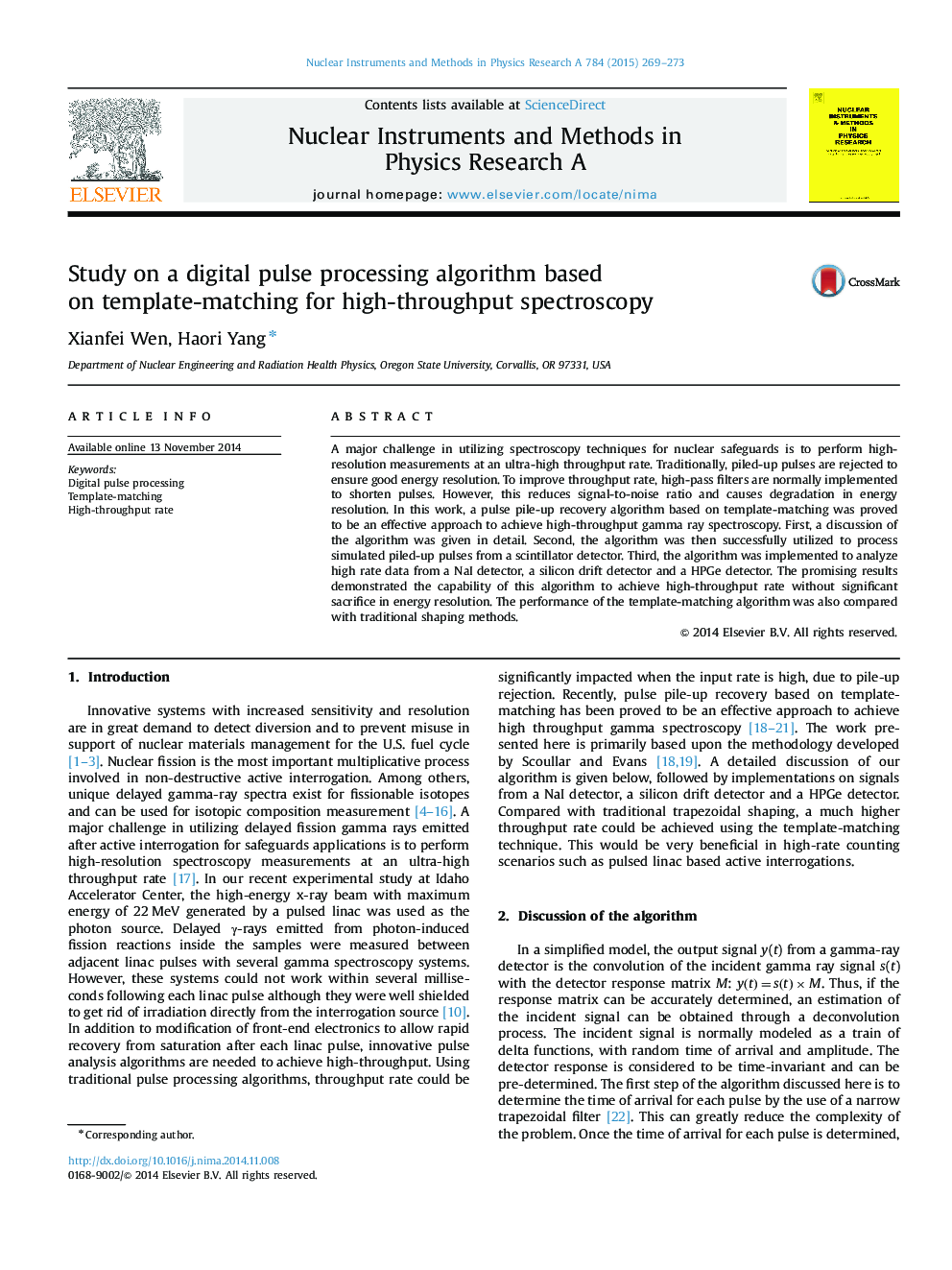| Article ID | Journal | Published Year | Pages | File Type |
|---|---|---|---|---|
| 1822467 | Nuclear Instruments and Methods in Physics Research Section A: Accelerators, Spectrometers, Detectors and Associated Equipment | 2015 | 5 Pages |
•A detailed discussion on the template-matching algorithm was given.•The algorithm was tested on data from a NaI and a Si detector.•The algorithm was successfully implemented on high rate data from a HPGe detector.•The performance of the algorithm was compared with traditional shaping methods.•The advantage of the algorithm in active interrogation was discussed.
A major challenge in utilizing spectroscopy techniques for nuclear safeguards is to perform high-resolution measurements at an ultra-high throughput rate. Traditionally, piled-up pulses are rejected to ensure good energy resolution. To improve throughput rate, high-pass filters are normally implemented to shorten pulses. However, this reduces signal-to-noise ratio and causes degradation in energy resolution. In this work, a pulse pile-up recovery algorithm based on template-matching was proved to be an effective approach to achieve high-throughput gamma ray spectroscopy. First, a discussion of the algorithm was given in detail. Second, the algorithm was then successfully utilized to process simulated piled-up pulses from a scintillator detector. Third, the algorithm was implemented to analyze high rate data from a NaI detector, a silicon drift detector and a HPGe detector. The promising results demonstrated the capability of this algorithm to achieve high-throughput rate without significant sacrifice in energy resolution. The performance of the template-matching algorithm was also compared with traditional shaping methods.
